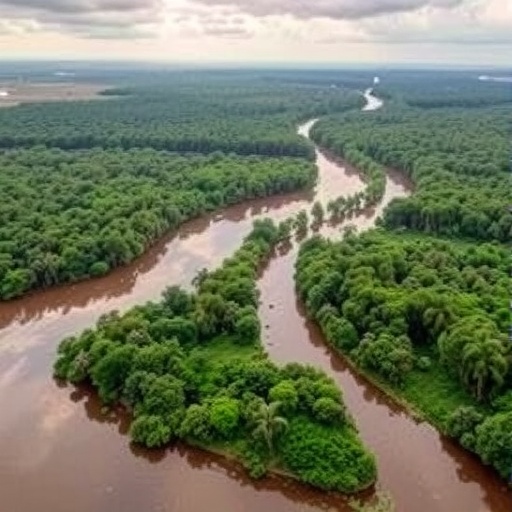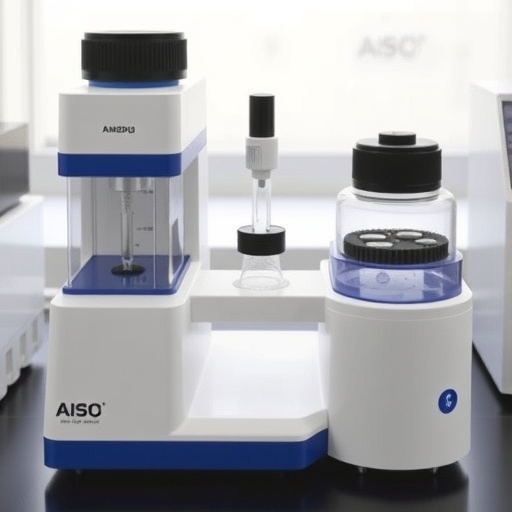PROTECT YOUR DNA WITH QUANTUM TECHNOLOGY
Orgo-Life the new way to the future Advertising by AdpathwayIn the recent study conducted by Amar, AbdAlla, and Wang, a groundbreaking examination of the plastomes and phylogenomics of the threatened wild Egyptian Capparis taxa was undertaken, revealing crucial insights into the biodiversity and conservation needs of these species. Given the rising challenges posed by habitat loss and climate change, understanding the genetic makeup of these plants has never been more vital. The research underscores the potential for genomic tools in assessing the conservation status of plant species that are at risk of extinction.
The study highlights the importance of Capparis, a genus that includes several economically and ecologically significant species. Distributed throughout diverse ecosystems, these plants not only serve various human needs but also play essential roles in their habitats. The researchers aimed to elucidate the genetic variations among different Capparis taxa in Egypt, identified for their unique adaptations and survival strategies. This inquiry was critical in understanding how these plants could respond to environmental pressures and what conservation strategies could be effectively employed.
Through meticulous plastome comparison, the authors examined the variations in the chloroplast genomes of selected Capparis species. Chloroplasts are essential for photosynthesis and energy production in plants, making their genomic structure a prime target for assessing genetic diversity. The investigation used advanced sequencing technologies, which have revolutionized genomic studies by offering high-throughput data generation. Such methodologies enabled the researchers to compile comprehensive genetic profiles for the targeted taxa, paving the way for nuanced insights into their phylogenetic relationships.
Phylogenomic analysis served as a cornerstone of the study, providing clarity on how these taxa are related through evolutionary lineages. By constructing a phylogenetic tree, the researchers could visualize and analyze the evolutionary history of the Capparis species in Egypt. This analysis illuminated the divergent paths these plants have taken in response to ecological pressures over time. Understanding these evolutionary dynamics is paramount for conservation strategies, as it highlights the resilience and adaptability of certain species compared to others.
Furthermore, the findings pointed toward significant implications for conservation biology. With the potential ontogeny of the Capparis taxa being at risk, the study emphasizes the urgent need for the development of conservation plans grounded in robust scientific evidence. Researchers advocate for enhanced protective measures to safeguard these plants, suggesting that conserving genetic diversity within these species could be vital for their long-term survival and adaptability.
The research also tackled intriguing biogeographical questions, revealing how geographical distribution influenced the genetic variability among the Capparis taxa. It showed that some species adapted to specific environmental niches, demonstrating remarkable traits that could be of great interest to plant breeders and conservationists alike. These findings encourage the exploration of local adaptations and their implications for plant resilience, particularly at a time when ecosystems are facing unprecedented levels of stress from both anthropogenic activities and climatic fluctuations.
As the application of genomic research continues to gain traction in conservation biology, Amar and colleagues have positioned their work as a crucial contribution to this expanding field. Their results serve as a call to action for researchers, policymakers, and conservationists to integrate genetic studies into conservation frameworks. This could foster a deeper understanding of biodiversity, ultimately leading to more informed decision-making processes regarding species protection.
Moreover, the implications extend beyond the Capparis genus itself, suggesting a model for studying other threatened plant species globally. The methodologies employed and the insights gained from this study can be replicated, offering a blueprint for similar investigations aimed at conserving plant diversity amidst growing external pressures. The recognition that understanding the genetic basis of these species can directly influence conservation success is a valuable takeaway from this research.
In conclusion, the study by Amar and his colleagues serves as a reminder of the interconnectedness of biodiversity and conservation efforts. As we navigate through the complexities of environmental challenges, leveraging technologies such as genomics can revolutionize our approach to biodiversity preservation. The plea for greater awareness and action to protect threats to the Capparis taxa resonates deeply within the scientific community and beyond, reinforcing the significance of their findings for current and future generations.
The issue of plant conservation is critical in the contemporary world, where species globally are facing rapid extinctions. The genetic insights gleaned from the study of Capparis taxa pave the way for a science-driven approach to conservation, emphasizing the role of genetics in forming effective strategies to preserve our natural heritage. As stakeholders from various sectors unite to address these pressing challenges, this research stands as a beacon of hope, showcasing the power of science in cultivating enduring solutions for our planet’s biodiversity.
As we strive to combat the forces threatening plant diversity, Amar and his team’s work exemplifies the potential of integrated approaches to conservation, urging a collective effort towards the sustainment of ecological balance. By fostering collaborations and encouraging further research, we can ensure that the legacy of the Capparis taxa and countless other species does not fade into obscurity, but rather thrives in the vibrant tapestry of our planet’s ecosystems.
In a world increasingly characterized by uncertainty and change, this research not only sheds light on the plights of the Capparis genus but also invites us to reflect on our role as stewards of nature. It compels us to consider the moral imperative of conserving our flora and fauna, ensuring that future generations inherit a rich, diverse world. Through a commitment to understanding and protecting our natural environment, we hold the key to securing a sustainable future for all living organisms that share our planet.
Subject of Research: Phylogenomic analysis and plastome comparison of Egyptian Capparis taxa
Article Title: Plastome comparison and phylogenomic analysis of threatened wild Egyptian Capparis taxa.
Article References:
Amar, N., AbdAlla, H.A.M., Wang, QF. et al. Plastome comparison and phylogenomic analysis of threatened wild Egyptian Capparis taxa.
BMC Genomics (2025). https://doi.org/10.1186/s12864-025-12338-7
Image Credits: AI Generated
DOI:
Keywords: Conservation, phylogenomics, Capparis, plastome analysis, genetic diversity.
Tags: adaptation and survival in plantsassessing extinction risk in florabiodiversity and conservation strategieschloroplast genome comparisoncomparative plastome analysisconservation genetics of plantsecological significance of Capparis plantsendangered Egyptian Capparis speciesgenetic variations in Capparis taxagenomic tools for conservationhabitat loss and climate change impactsphylogenomics of Capparis


 8 hours ago
1
8 hours ago
1





















 English (US) ·
English (US) ·  French (CA) ·
French (CA) ·